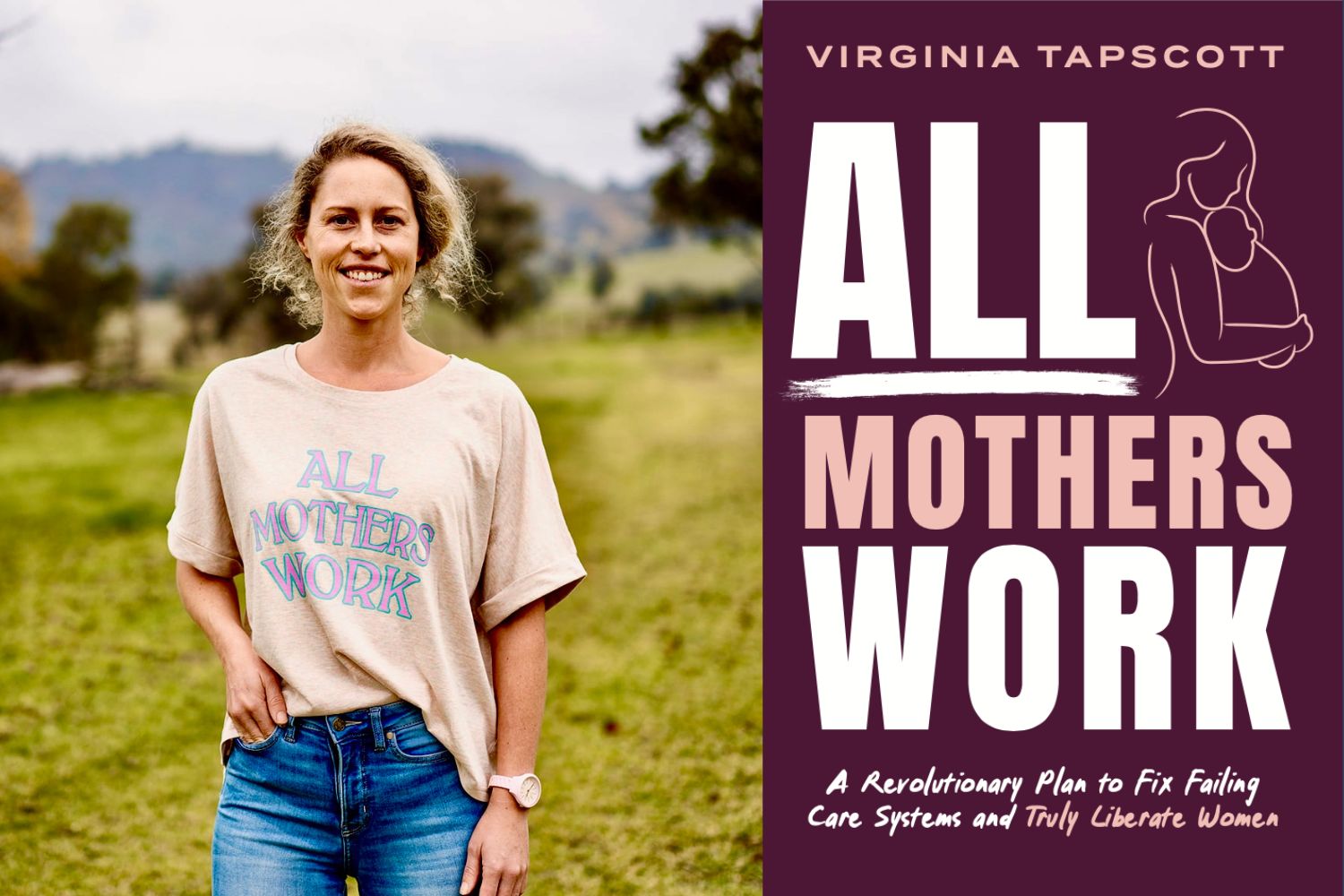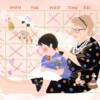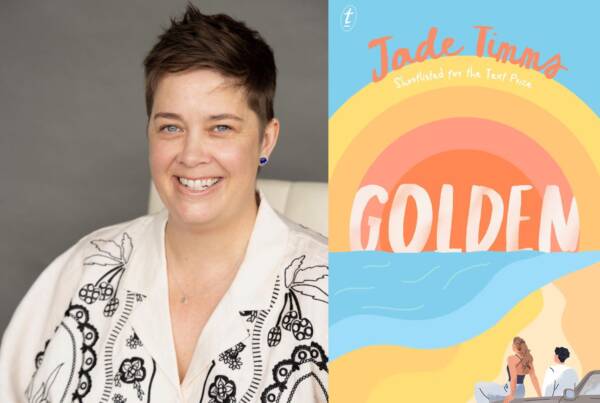Extract from All Mothers Work by Virginia Tapscott out now

The cry of my first-born drove me mad. I could not stand the sound of it. Every time he started up, it was like an electric shock jolted right through me. I felt extremely agitated until I was holding him and actively trying to make it stop. Under a set of less fortunate circumstances—without a supportive partner or without trusted, unwavering family and friends, perhaps without financial security—there is no telling what might have been in those early months of motherhood for me. I know how easily things could have spiralled.
There is a liminal space between reality and madness. Some of us get to that space and have someone or something that can help us back out. Some of us slip right in. Motherhood is an extraordinary psychological transformation and with that comes opportunity for growth but also risks. It can be a strange kind of portal to the best and the worst in us. An extraordinary catalyst for change dropped into our lives like an effervescent pill into a glass of water. We are fizzing away becoming someone new while fighting to stay the same.
The crying that nearly brought me undone had a clear and crucial purpose – it made a mother out of me. There is no other noise on the planet that has ever compelled me into action so instantly and so consistently. By the time I had my fourth baby, having been trained expertly by the cries of the previous three, I was acting almost completely on instinct. In some ways, I was nothing more than a fancy, mostly hairless monkey. Absolutely animal in the way I carried him around with me and tucked him in beside me to sleep.
Not even modern humans, with our university degrees and our fancy technology, are immune to the wiles of nature. She will go to great lengths to ensure the survival of a species. My biggest mistake was the war I waged on these age-old biological processes. We cannot ignore, abandon, or suppress the mother-infant bond without serious and lasting consequences. Mothers and babies do not suddenly evolve out of this ancient dynamic.
Neuroscientists now understand in astonishing detail how a mother’s brain starts changing from the moment she becomes pregnant in order to better equip her for caregiving. It’s important to remember that ‘mother’ is as much a verb as it is a noun. Acts of mothering are sacred, essential, and often carried out by a range of figures in an infant’s life. How we are mothered literally shapes our brain.
In recent decades, we have made discoveries that pose huge ethical and logistical problems for the gender-equality movement as we know it. We now know that mothers tend to elicit higher levels of oxytocin in infants than fathers during affectionate contact, and that fathers tend to elicit higher levels of oxytocin in infants during stimulating interactions like play. While this evidence has at times been used to argue the interchangeability of mothers and fathers, it actually reinforces the prominence of mothers in the early months and years—presenting a problem for equality movements that call for an arbitrary, split-down-the-middle division of care labour from birth.
While researchers had been using neuroimaging technology for decades to unravel the mysteries of adult brains, it has been only in very recent years that infant brains have come under the microscope. Perhaps the most surprising finding has been that the emotional brain circuitry of infants is far more advanced and sensitive than initially thought. We know that foundational brain circuits for mood, depression, anxiety, addiction and resilience are laid down between conception and age three and last for life.
The dominance of the mother as a fixture in our minds posed a problem for equality movements that sought to equalise workforce participation and early-years caregiving roles in an arbitrary fashion. They had long argued that the mother figure was a cultural construct, a harmful gender stereotype for which there was no biological or evolutionary basis. These movements were extraordinarily successful in playing down the role of the mother. In the absence of hard evidence such as brain imaging and immunoassays that tracked hormone levels, cultural determinism flourished as the underpinning belief of most forms of feminism.
We know better now, but we are so deeply invested in systems that require the erasure of mothers that we find ourselves stuck. We see no way out even though we understand, at a scientific level, the ways these systems are hampering human development.
The cultural iterations of the mother figure remain, not as a hangover from a backward civilisation but as a seed of truth. Mother Earth. Mother Mary. Mothership. The mother is impossible to disentangle from our definition of love and the self – our humanity. The mother extends beyond culture and politics; she is a bodily experience we cannot shake no matter how we try.
Contributions of mothers are not easily substituted or outsourced to the market. Once we recognise this, the solution becomes not to erase mothers, but to support them. We need to build systems that recognise all mothers work—whether paid or unpaid. That means policies that value caregiving as the foundation of a healthy society, investments that make it possible for parents to actually choose how to care for their children, and a cultural shift that sees motherhood not as an obstacle to equality but as a vital part of human flourishing.






